We’ve all peeked into the cart next to ours in the checkout line and tried to piece together a person’s life from its contents. How you grocery shop says a lot about who you are.
Grocery runs have changed a lot in recent years. Prices have soared and packages have shrunk. The pandemic normalized the presence of in-store shoppers for services like Instacart and Amazon Grocery. Consumers are spoiled — and perhaps paralyzed — by a staggering array of choices.
To better understand our relationship to the food we buy, we asked readers to send us their grocery receipts for the month of April, and selected 27 people from across the United States to focus on. Some shopped nearly every day, others only a few times a month. Some relied on frozen meals, while others sought out the freshest produce.
In combing through their receipts — 283 of them, totaling more than $18,500 — we saw how identity, income and geography inform what makes it into the cart.
Go ahead. Look into eight of their carts.
In Cart 1 | Hy-Vee on April 5
Bananas, grapes, strawberries, romaine lettuce, squeezable guacamole, deli turkey, coffee creamer, shredded cheese, brat buns, flour tortillas, low-carb tortillas, honey-roasted almonds, individual baby-food pouches, Belvita breakfast cookies, lemon Oreo thins, Pringles, teething wafers, unsalted tortilla chips, store bakery tiramisù
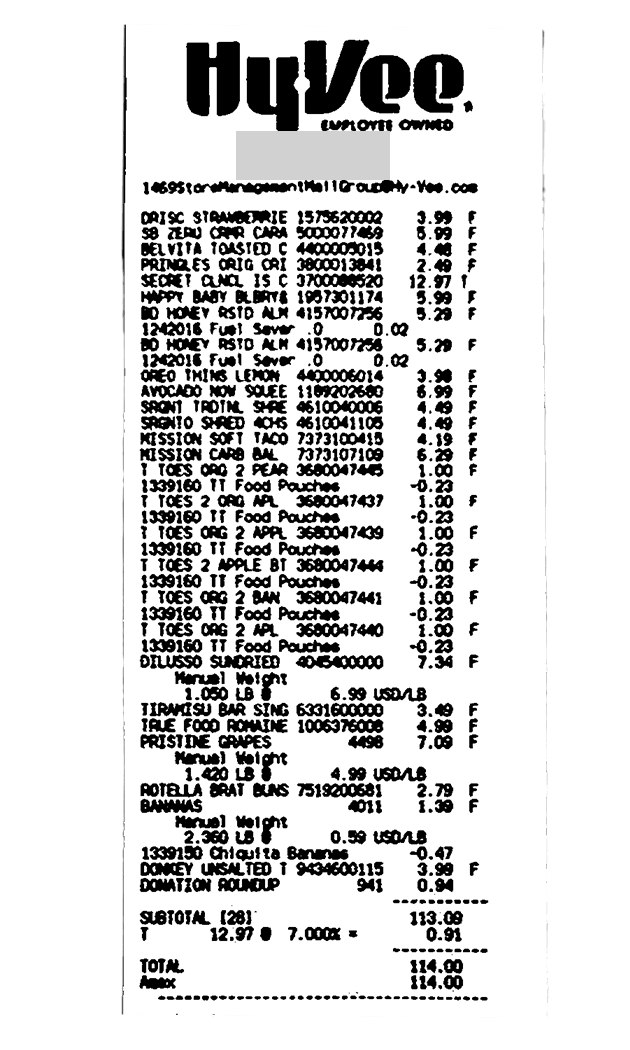
Jackie Kesterson
Omaha
Jackie’s April Shopping
Frequent purchases: Baby food (43 items), cheese (23)
Impulse purchase: Wuju chile crisp ($12.99)
With two children under the age of 3, Jackie Kesterson is finding grocery shopping to be far less fun. “The last couple years haven’t been as joyful as it once was,” she said, “just because there’s a lot more pressure and a lot less time.”
After her son was born in 2021, she made all of his food herself, followed the baby-led weaning approach and aspired to introduce him to diverse flavors. But come the arrival of her daughter, who is now 11 months old and picky about eating vegetables, those priorities shifted. “You have all these big dreams of building these food traditions with your kids, but I just don’t have the time,” said Ms. Kesterson, 36, who works in finance. “It is like, ‘Oh do you want a quesadilla or a peanut butter sandwich, or do you want chicken nuggets?’”
Baby-food pouches have become an easy way to sneak in vegetables. “I certainly feel conflicted about it,” she said.
Rebecca Gratz for The New York Times, including previous image.
In Cart 2 | Target on April 14
Apples, bananas, berries, lemons, grapes, broccoli florets, corn, lettuce, tomatoes, onions, chicken, Impossible Foods plant-based meat, eggs, milk, oat milk, frozen mixed fruit, frozen shrimp, Drumstick ice cream cones, bagels, bread, canned beans, maple syrup, rice, Kettle Brand potato chips, Nature Valley snack bars, Izze sparkling juice drinks, Topo Chico seltzer, bottled smoothie
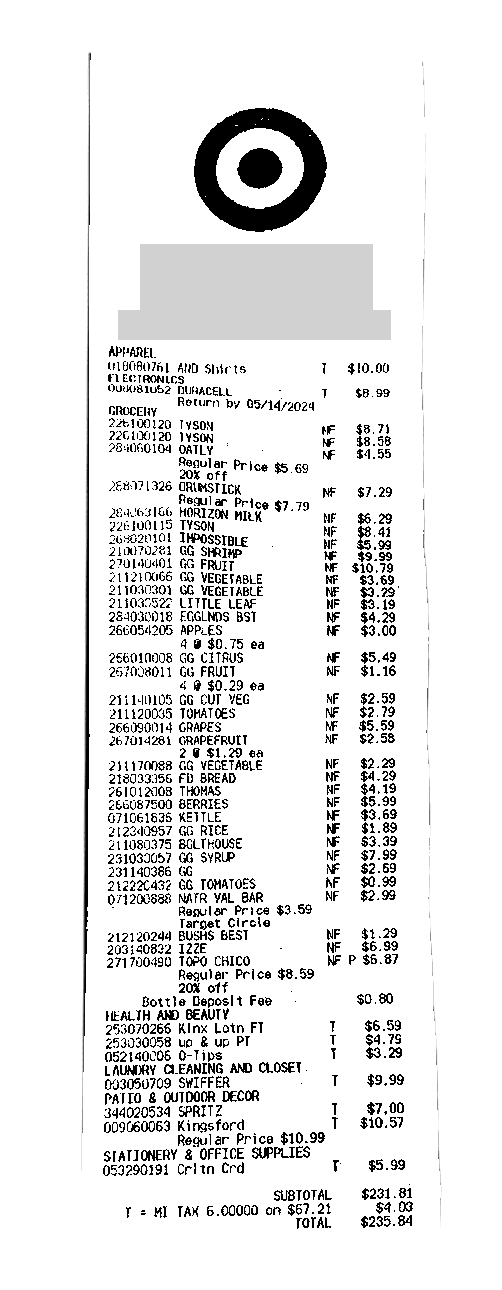
Kimberly Uhuru
Detroit
Kimberly’s April Shopping
Most expensive item: Birthday cake for a colleague ($39.99)
Impulse purchase: Five mangoes ($3.45 total)
Growing up in a low-income household, Kimberly Uhuru watched her mother bring a calculator to the grocery store, and grew accustomed to eating processed foods. Now she makes a comfortable living as a lawyer, and she and her husband can afford to prioritize buying fresh, organic ingredients. But the closest well-stocked grocery store is still a 25-minute drive from her home in Rosedale Park.
So she buys most of her groceries at Target, where the produce selection is limited but she can still get tomatoes, her favorite food. She can also find staples like yogurt and cereal, as well as Nature Valley bars, Sunchips and peanut butter cups for her two vegetarian teenagers to snack on — and plant-based meat alternatives. “My cart looks ridiculous,” said Ms. Uhuru, 48, who supplements her hauls with vegetables grown in her garden. “It looks like I am holiday shopping, and that will just be a regular Sunday for me.”
At the store, Ms. Uhuru is in the zone. “I have a list on my phone and I click off each item,” she said. “People think I am a shift shopper.”
Sylvia Jarrus for The New York Times, including previous image.
In Cart 3 | Walmart on April 20
Celery, shredded collard greens, red onion, tomatoes, deviled egg potato salad, deli salami, deli turkey, pulled rotisserie chicken, milk, oat milk, coconut water, raspberry lemonade, strawberry lemonade, Blackberry La Croix, Waterloo black cherry sparkling water, Waterloo cherry limeade sparkling water
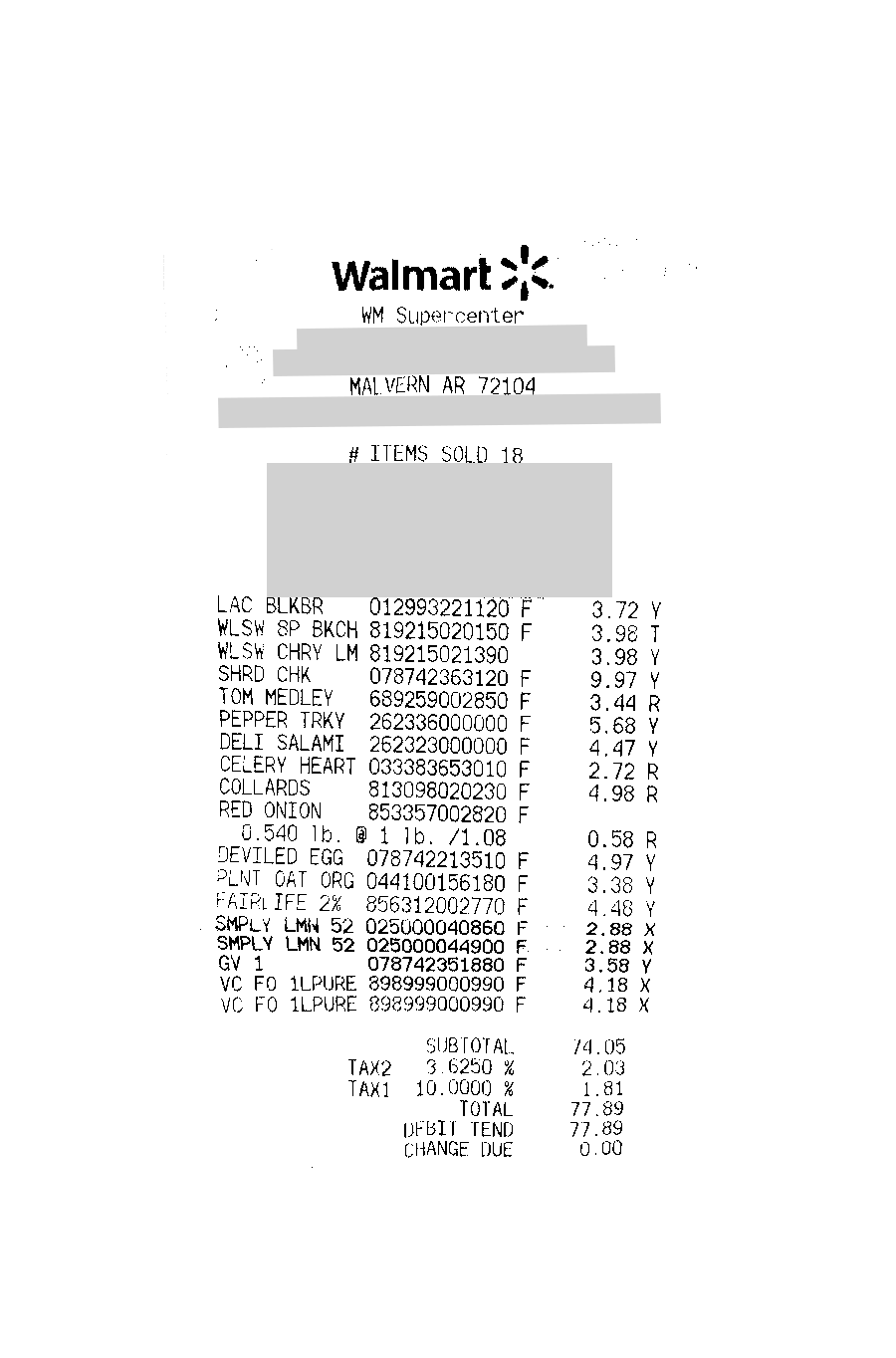
Sawyer Bonsib
Malvern, Ark.
Sawyer’s April Shopping
Impulse purchases: Castelvetrano olives ($5.99) and sparkling water (prices vary)
Share of drinkable purchases: 70 percent
What might a stranger notice if she peered into Sawyer Bonsib’s cart? A lot of liquids. “Food-to-beverage ratio is unusual,” Mr. Bonsib said.
As a member of Alcoholics Anonymous, he stocks his fridge with a variety of drinks, in part to replace alcohol. “It just helps me relax, to drink something cold,” he said. There’s iced tea, milk (almond, oat and cow’s) and strawberry-kiwi juice. And there’s Red Bull, ginger ale and root beer. But his favorite beverage? “When I am thirsty, there is nothing like water,” he said.
Mr. Bonsib, 37, lives alone and works from home for a health insurance company. He isn’t always keen to meal-prep, so he often eats frozen meals for lunch — his favorite is spaghetti with meat sauce — and saves more elaborate cooking for dinner. In April, he made a crispy tamari-marinated tofu stir-fry one night; on another, he pan-seared a filet mignon, which is “more of a splurge.”
Will Newton for The New York Times, including previous image.
24 of 27
shoppers bought cheese in April. It was the most commonly purchased item among the group, with more than 35 varieties appearing across receipts.
52%
of shoppers purchased alcohol during a food run. Sales of beer, wine and liquor are permitted at grocery stores in 20 states.
1,001
The number of fresh produce items purchased. Fresh produce made up one-third of purchases. Berries, bananas and oranges topped the list.
70%
of shoppers bought at least one bag of chips — potato, plantain, shrimp, corn, pita — the most popular snack item and the fifth most-purchased product after cheese, bread, berries and milk.
In Cart 4 | Costco on April 19
Raspberries, asparagus, mixed bell peppers, grape tomatoes, tomatoes on the vine, deli turkey, lamb rib racks, milk, Pecorino Romano, pistachios
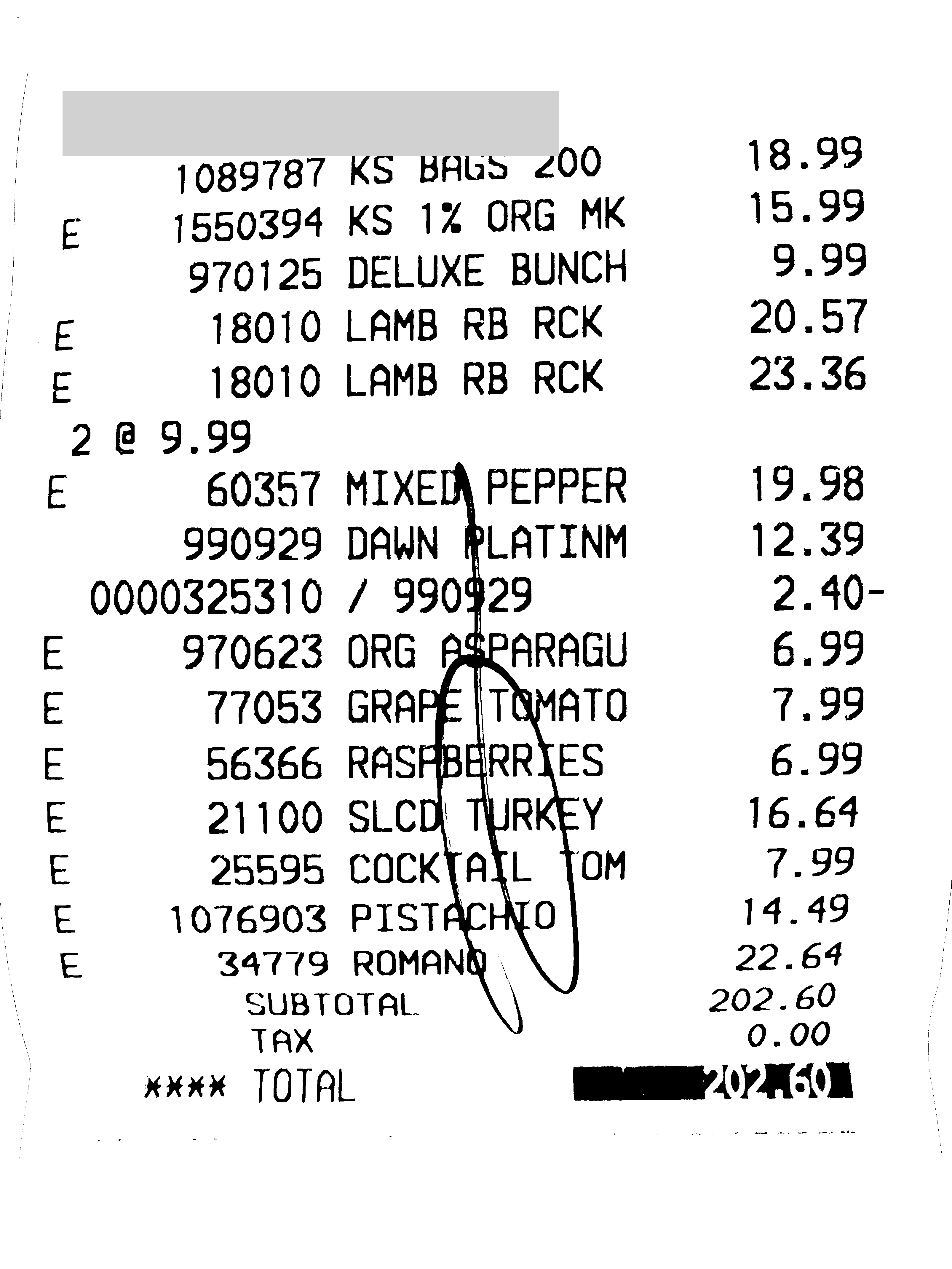
Ayse Gilbert
Anchorage
Ayse’s April Shopping
Frequent purchases: Cheese (15 items) and scallions (10)
Impulse purchase: Buddha’s hand ($22.30)
It’s tough being the host with the most when you live in a state that imports 95 percent of its food, and pays dearly for the transport. But that’s reality for Ayse Gilbert, an artist who with her husband entertains weekly at their home. Her elaborate menus rarely repeat. An April dinner party featured a berbere-spiced rack of lamb and an orange marmalade cake.
While some people associate sparse grocery shelves with the pandemic, in Alaska shortages are the norm. “I have to maintain flexibility, because if I decide I am going to stir-fry Indian-style okra, it may not be there,” said Ms. Gilbert, 71, who moved to Anchorage from Carmel, Calif., in 1974.
She’s moved by attractive fruits and vegetables — a fragrant buddha’s hand, a citrus fruit, caught her eye on one shopping trip, and she misses the fresh artichokes of her West Coast upbringing. “I go to California, I have a $20 bill and I can get a ton of great produce,” she said. “I have a $20 bill here? That is two pounds of green beans. That is it.”
Kerry Tasker for The New York Times, including previous image.
In Cart 5 | Indian Cash and Carry on April 6
Guava, papaya, chikoo slices, frozen dosa batter, paratha, chaat masala, chole masala
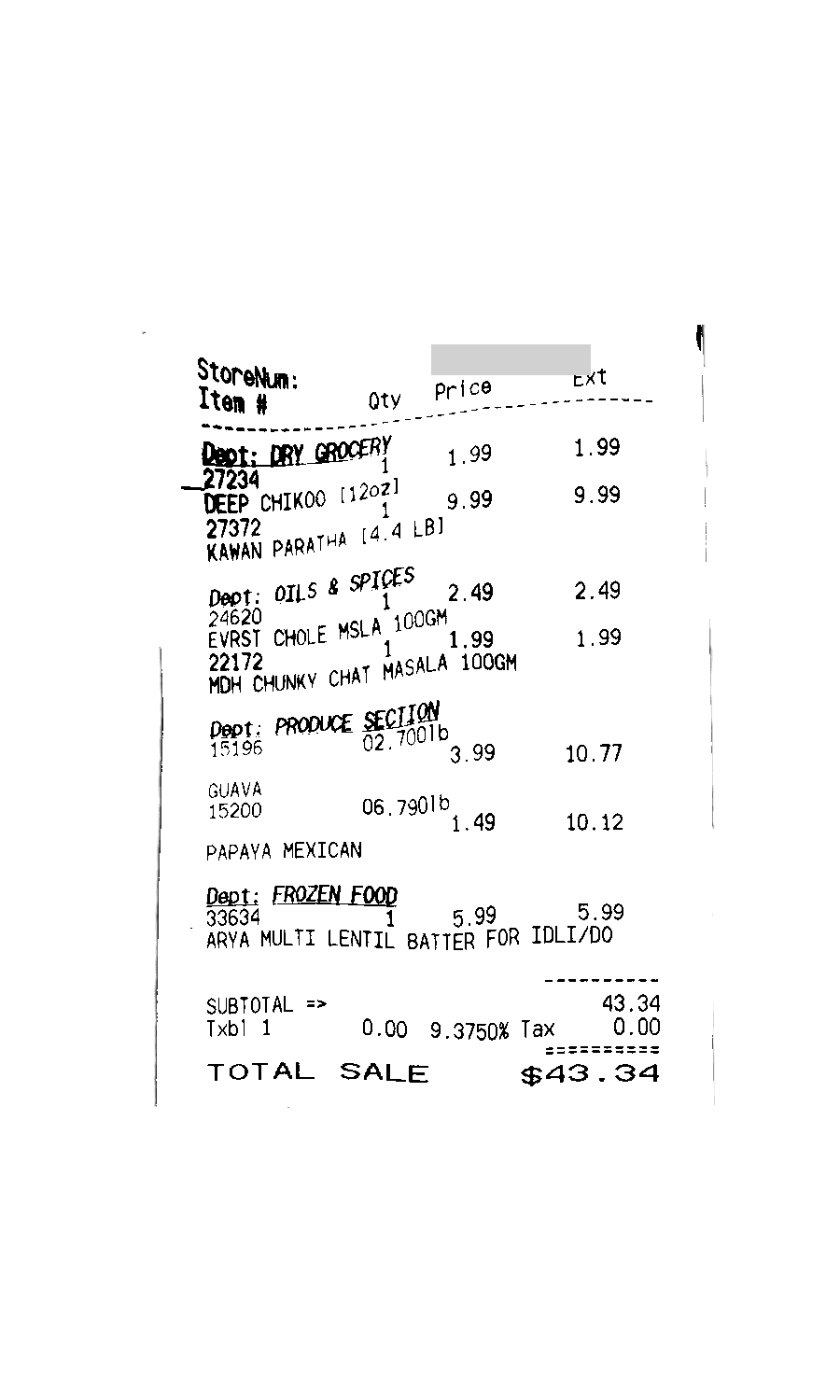
Sonal Singh
Foster City, Calif.
Sonal’s April Shopping
Snacks and treats purchased: 26 items
Most expensive item: Bulk olive oil ($59.99)
Sonal Singh distinctly remembers what shopping was like in 2004, when she immigrated to the United States from India to get her master’s degree at the University of Georgia. “My grocery bill was $50 a week at most,” she said. Now that she is married, with two teenagers, and living in California, the bill is closer to $500 a week. Her twins are experiencing major growth spurts — and snacking accordingly — so she picks up Cheez-Its, Pocky and Annie’s fruit snacks in bulk at Costco.
Ms. Singh, 43, a partner at a consulting firm, has no trouble finding Indian staples like $45 boxes of Kesar mangoes and dosa batter in Foster City, which has a large Asian American population. But her children have a low tolerance for spicy foods and often request dishes like pasta with vodka sauce and smash burgers, requiring her to prepare two dinners a night.
Ms. Singh’s parents were visiting from India in April, so she made sure to stock the refrigerator with parathas, honeydew melon and grapes, further adding to her grocery bill.
Carolyn Fong for The New York Times, including previous image.
In Cart 6 | H-Mart on April 2
Thai basil, Thai green chiles, garlic, scallions, fresh lo mein noodles, rice vinegar
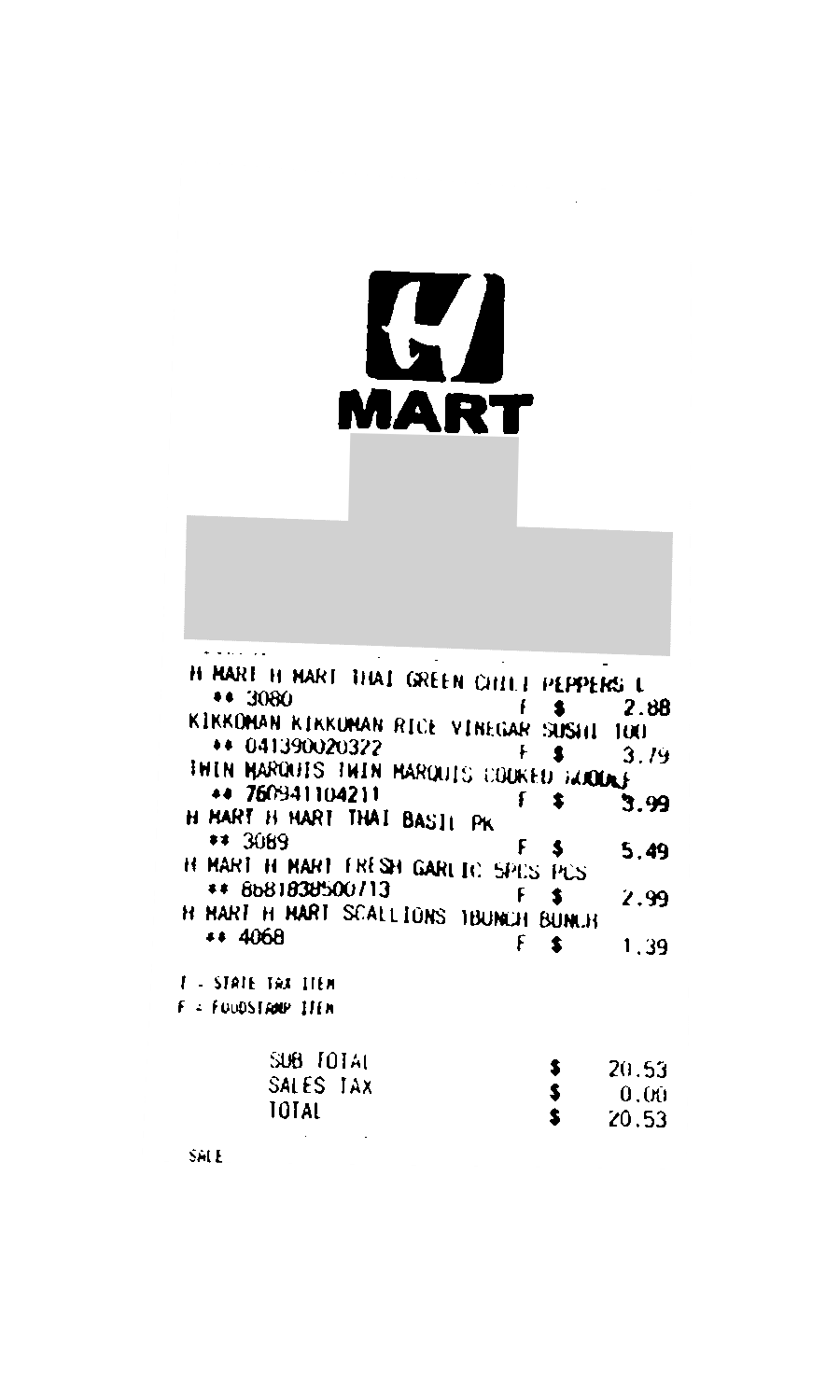
Abdul Bingahlan
New York City
Abdul’s April Shopping
Different grocery stores visited: 10
Impulse purchase: A single brown-butter chocolate chip cookie ($1.50)
Grocery shopping is meditative for Abdul Bingahlan, a statistical analyst who cooks for himself and his wife, Anisah, a medical school student. “As I got older, it became a place of experimentation, trying new things,” he said. While he is content to cook the same dish on repeat, his wife has encouraged him to seek variety in different cuisines. So in April, he bought herbs and chiles to make a new pad krapow recipe. “We’re now left with an abundance of green chiles, so I’m spinning my brain on how we can put them to use,” said Mr. Bingahalan, 27, who bought a container of roughly 50 for less than $3. Among his options: making chicken karahi with them, or seeing if his neighbor could use any.
Since he was observing Ramadan through April 9, he sometimes shopped on an empty stomach. “The old adage ‘Don’t go grocery shopping when you are hungry,’ applies triply during Ramadan,” he said.
Brittainy Newman for The New York Times, including previous image.
What You Buy When You …
Supplement Shopping With Hunting
“There is a lottery for residents to have the opportunity to hunt. In 2019, I harvested the moose, and that feeds our extended family on red meat for a couple of years. I rarely buy or eat commercial meat, so subsistence hunting and fishing affects my diet in that I eat fish and game only when it’s available. I call it Alaskatarian.” — Amy O’Neill Houck, 51, Cordova, Alaska
Are on Mounjaro
“My whole life, breakfast was incredibly important. Now that I am on Mounjaro, I have completely changed my shopping habits in that I am not picking out breakfast items for myself. We spend at least $50 less a week because we are not buying five different kinds of chips and desserts. We do a lot more fresh vegetables than we used to.” — Mindy Huskins, 33, Newark, Del.
Are a College Student
“I ride the Atlanta buses and the Emory shuttles to grocery shop, and they run only on the weekends. If I missed a Saturday, I wouldn’t have a necessary item for another week, so I had to be very thorough. It’s hard to keep vegetables and fruits edible two weeks from when you purchased them, so I would have to freeze a lot of things.” — Naeman Mahmood, 22, Atlanta
Shop Exclusively Online
“Most grocery stores are designed to be loud and distracting. I am autistic and have A.D.H.D., and the sensory overload is really oppressive. Coordinating cooking and having several dishes on the stove is stressful, so I buy a lot of frozen diners, canned soup and frozen vegetables. Things are just as easy if not easier to get online. I like to be able to see all of the products, and if something is out of stock, I know at that moment.” — Martha Goff, 66, Sacramento
These interviews were edited for length and clarity.
In Cart 7 | H-E-B on April 13
Blackberries, blueberries, strawberries, lemons, limes, mini avocados, celery, dill, garlic, mint, parsley, scallions, sugar snap peas, chicken thighs, salted butter, Cool Whip, Greek yogurt, canned chickpeas, cooking spray, honey, vegetable oil, caramel-almond caffeine bars, brownies snack pack, tortilla chips, angel food cake, orange juice
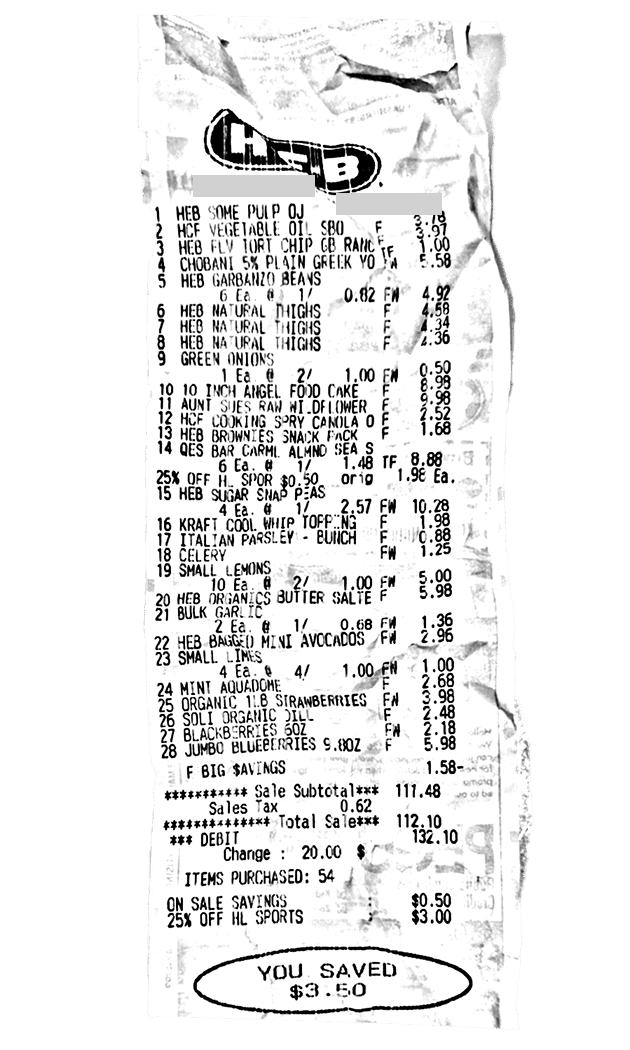
Gabby Cavazos
Austin, Texas
Gabby’s April Shopping
Frequent purchases: Berries (17 items) and canned beans (10)
Favorite deal: 6 Quantum Energy Square caffeine bars ($8.88; 25 percent off)
Many parents are familiar with the term “berry budget,” the outsize percentage of grocery funds spent on berries for young children. Gabby Cavazos said her 2-year-old son, who she brings to the store with her, typically eats a carton of blackberries before they even get to the checkout counter. She reaches for whichever berry is least expensive — blackberries were unusually cheap on a recent trip, so she stocked up. “Ten dollars a week on berries is where we try to cap him,” she said.
Ms. Cavazos, 32, an account executive at a software company, still feels the effects of inflation and doesn’t shy away from deals, like $7 sushi or nearly expired sliced watermelon. “I am like, ‘What did I even buy? How am I spending 100 bucks?’ ” she said.
Still, you can count on one item to almost always end up in her cart: the famous tortillas from the Texas-based grocer H-E-B. “We always have those in our fridge for a quesadilla or breakfast taco,” she said. “Or my toddler will gnaw on a tortilla while I’m making dinner.”
Jessica Attie for The New York Times, including previous image.
In Cart 8 | Abundant Life Natural Foods on April 24
Apples, pears, cucumbers, parsley, purple snow peas, radicchio, buckwheat ramen, peppermint dark chocolate bar, sea salt dark chocolate bar, checkerboard cookies
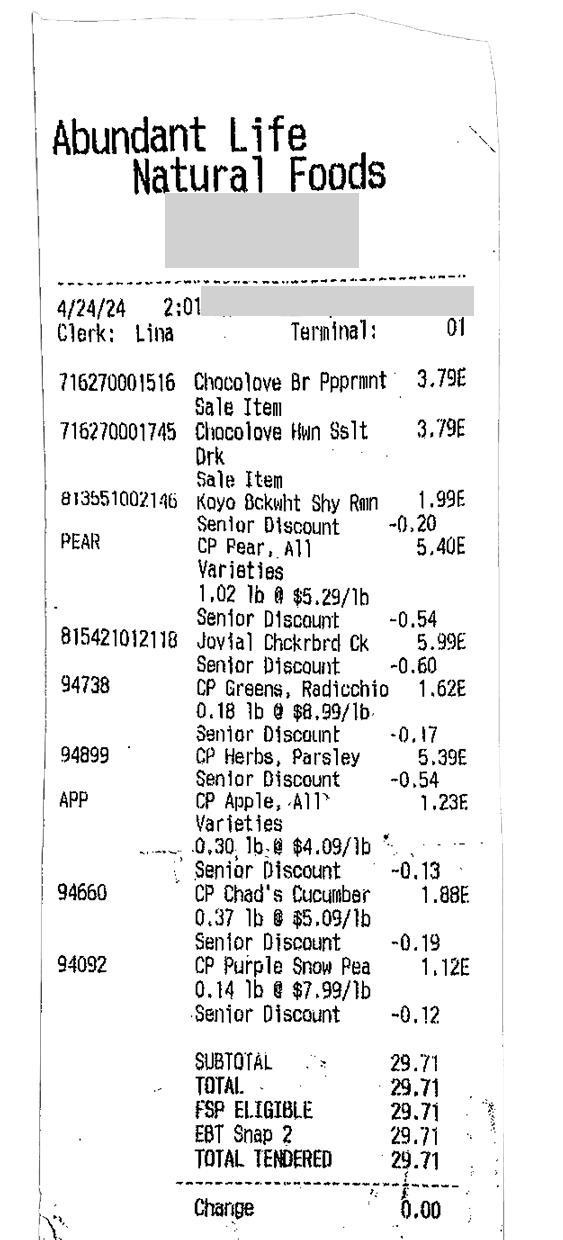
Alan Young
Hilo, Hawaii
Alan’s April Shopping
Frequent purchases: Chocolate (10) and parsley (5)
Impulse purchase: A mango ($8.07 before senior discount)
On the mainland, finding ingredients like galangal root, Chinese chives or purple snap peas might prove tricky. Not on the Big Island of Hawaii. The state is home to many cultures and even more varieties of fresh produce, and thankfully for Alan Young, many grocery stores, farmers’ markets and bakeries accept his Electronic Benefit Transfer card, loaded with $500 every month.
Mr. Young, 80, a retired caterer, is one of 41.9 million Americans — nearly 13 percent of the population — who are part of the Supplemental Nutrition Assistance Program, or SNAP, which provides financial aid for groceries to individuals with low incomes. Although food in Hawaii can be expensive, the monthly stipend goes a long way for him. In April, he bought locally grown radicchio, heirloom tomatoes and various kinds of bananas — and a few extra treats for himself. “One of my indulgences is La Croix seltzer,” said Mr. Young, who lives with his partner.
Mr. Young, who does not own a smartphone and declined to be photographed, likes to seek out good deals. But, these days, many coupons are accessible only on apps.
Methodology
More than 1,000 readers responded to an article we published in March asking grocery shoppers to share their receipts. We itemized receipts from 27 participants and filtered out nonfood items to analyze shopping patterns among 3,269 purchases.
We did our best to reflect each transaction accurately. But precision is limited by the nature of the receipts themselves, which vary in detail from grocer to grocer. For instance, some stores price lemons individually, while others price them by the pound. So we counted any amount of lemons on a single receipt as one purchase of lemons. For products always sold and priced individually, like a tub of yogurt, we reflected the total number of packages purchased in our count. And receipts often gave no information on package sizes.







